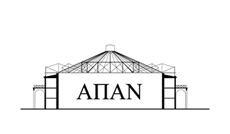M. Koromila, Mistras. Third program, 1261-1348.
[Audio-Visual]
Title
M. Koromila, Mistras. Third program, 1261-1348.
Subtitle
From the Frankish rulers of Morea to the Byzantine bigwigs and Constantinopolitan power.
Type
Audio
Classification
Classification
Radio Broadcast.
©:
Μ. Κορομηλά
Production date
14/4/1989
Languages
Greek
Duration
57΄10΄΄
Subject / Synopsis / Locations
Third in a series of five hour-long radio broadcasts about the historical development of the fortified city of Mistra from the mid-13th century to the 20th century when it was converted into an archaeological site.
In the third program, the fortified city is surrendered by the Franks to Emperor Michael VIII Palaiologos in autumn 1261 and the Byzantines arrive in Frankish-held Lakonia in the spring of 1262. This was the first Byzantine period for Mistra, when the Frankish castle was converted in a hasty and disorganized fashion into a Greek city state that would accommodate the inhabitants of Lacedaemon within the strong walls that climbed up the hillside. The steep and narrow streets of the Metropolis, public fountains and hemmed-in building plots are described, as well as the church of St Demetrius, Sts Theodore and, in greater detail, the church of the Panagia Odegetria, katholikon of the Vrontochi Monastery which was founded by the monk Pachomios with imperial patronage and adorned with exquisite wall paintings.
Cameo descriptions of the great personalities of this period: Nikephoros Moschopoulos, Metropolitan of Lacedaemon who corresponded with the intellectuals and scholars of Constantinople (Maximos Planudes, George Pachymeres, Manuel Philes) and the protosyncellos Pachomios.
Musical accompaniment.
In the third program, the fortified city is surrendered by the Franks to Emperor Michael VIII Palaiologos in autumn 1261 and the Byzantines arrive in Frankish-held Lakonia in the spring of 1262. This was the first Byzantine period for Mistra, when the Frankish castle was converted in a hasty and disorganized fashion into a Greek city state that would accommodate the inhabitants of Lacedaemon within the strong walls that climbed up the hillside. The steep and narrow streets of the Metropolis, public fountains and hemmed-in building plots are described, as well as the church of St Demetrius, Sts Theodore and, in greater detail, the church of the Panagia Odegetria, katholikon of the Vrontochi Monastery which was founded by the monk Pachomios with imperial patronage and adorned with exquisite wall paintings.
Cameo descriptions of the great personalities of this period: Nikephoros Moschopoulos, Metropolitan of Lacedaemon who corresponded with the intellectuals and scholars of Constantinople (Maximos Planudes, George Pachymeres, Manuel Philes) and the protosyncellos Pachomios.
Musical accompaniment.
Producer / Production
Marianna Koromila
Research / Scientific supervision
Marianna Koromila
Texts
Marianna Koromila
Musical selection
M. Koromila
Speaker / Narrator
Marianna Koromila
Other features
Recording technicians: Olga Benea, Andreas Yemistos
Digital processing for APAN Marina Kokori
Digital processing for APAN Marina Kokori
Key words
Andronicus II Palaeologus / Andronikos II Palaiologos.
Anna Angeloducaena Comnena /Anna Angelodoukaina Komnene.
Byzantine Empire.
Byzantine Laconia.
Byzantine monuments.
Byzantine nobility / noblemen.
Destruction of monuments.
Ecclesiastical art.
Feudal society.
Frankish rule / Latin rule.
Greece.
Guillaume of Villehardouin.
Iconographic art.
Laconia / Lakonia.
Late Byzantine period.
Late Byzantine scholars.
Late Byzantine urban planning.
Latin Occupation.
Metropolis of Lacedaemon.
Mistra / Mystras.
Nikephoros Moschopoulos.
Orthodox churches.
Palaeologan / Palaiologan architecture.
Palaeologan / Palaiologan icon painting.
Palaeologan / Palaiologan Renaissance.
Palaeologan age / Palaiologan age.
Palaeologans / Palaiologans.
Peloponnese.
Peloponnese, landscape.
Principate of Achaea.
Taygetos, mountain.
Villehardouin family.
Wall painting / Mural painting.

